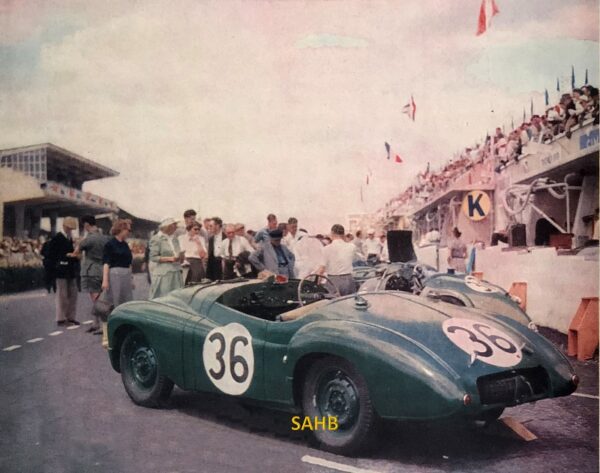
The rather long name for this car was a clear reference to the successful saloon car first seen in public on Saturday 27 July 1946 in a cavalcade to celebrate 60 years of the British Motor Industry. Full series production of the Jowett Javelin started in November 1947. By 1950, when the sports version of the car was launched as the Javelin Jupiter, the Javelin saloon was already successful in sales and sporting achievements. However, the Javelin part of the name was dropped in February 1951.
To build the Jupiter, Jowett use the Javelin’s power train with its distinctive flat-four engine. The idea was to build a sports car for export in the hope of increasing the company’s inadequate post-war steel allocation. The car was displayed in chassis from in October 1949 at the London Motor Show. The complete car appeared in New York in April 1950.
Jowett, with the help of Lawrence Pomeroy of The Motor, joined forces with ERA to persuade Eberan von Eberhorst, formerly with Auto Union, to come to England. He joined ERA in Dunstable and designed and developed what became the Jupiter’s tubular steel chassis. Suspension was by torsion bars and anti-roll bars front and rear with independent suspension at the front. The engine was mounted very far forward ahead of the front axle line with the radiator behind it over the four-speed gearbox with column change. Adjustment of the anti-roll bars allowed fine suspension tuning. On this theoretically torsionally stiff frame Reg Korner of Jowett put a steel-framed aluminium drophead coupé body with a bench seat for three people. However, von Eberhorst’s chassis had been designed for a closed coupé and it proved to require strengthening. The anti-roll bars were abandoned. There was no external access to the boot and the bonnet was rear hinged and opened complete with the wings. The Jowett factory made 731 Mk1 and, from late 1952, 94 Mk1a cars.
The flat-four overhead-valve engine of 1,486cc was more highly tuned than in the Javelin and had its compression ratio raised from 7.2:1 to 8.0:1. It developed 60bhp at 4,500rpm, giving the car a maximum speed of 85 mph. The Mk 1a had a little more power (63bhp) and an opening lid to a boot of larger capacity.
Our Snapshot is from a major competition success for the car: a record-breaking class win at the 1950 Le Mans 24 Hour race in the hands of Tommy Wisdom and Tommy Wise. The Jupiter then scored a class one-two in the 1951 Monte Carlo International Rally, an outright win in the 1951 Lisbon International Rally, and a class one-two in a gruelling four-hour sports car race on the public roads at Dundrod Circuit in Northern Ireland in September 1951. There were class wins again at Le Mans in 1951 and 1952.
A racing derivative of the Jupiter, the R1, was entered in the 1951 1,500cc sports car race at Watkins Glen and won, and it was an R1 that won its class at Le Mans in 1952. An intended successor, the R4, was made with a fibreglass body and a new lighter chassis, but Jowett closed before the car could reach production.
Image courtesy of The Richard Roberts Archive: www.richardrobertsarchive.org.uk







Leave a Comment